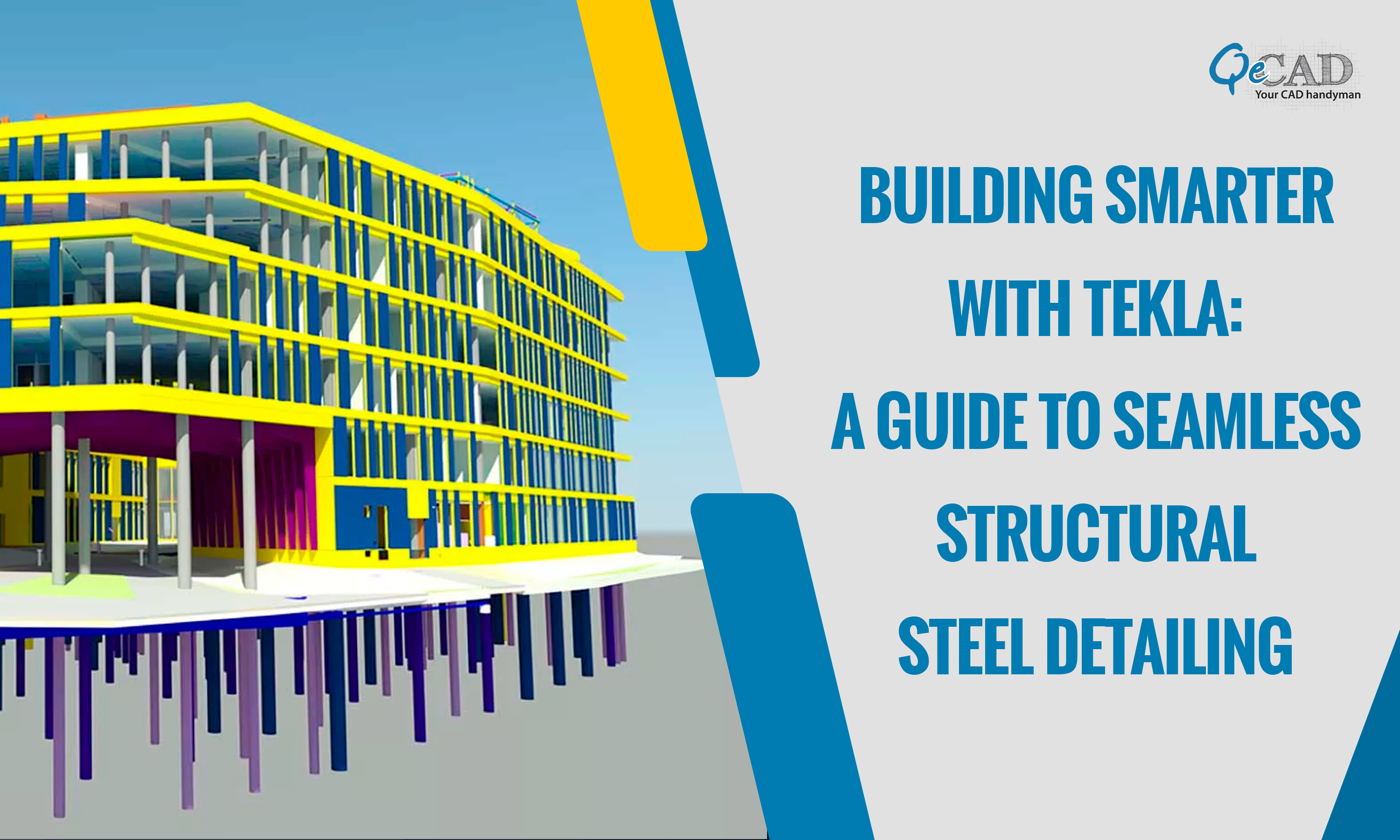
Introduction:
In the fast-evolving scenario of the structural steel industry, technological advancements have become the driving force behind efficiency, accuracy, and overall project success. One of the revolutionary tools that has taken up the industry by storm is Tekla Steel Detailing. This sophisticated software has transformed the way structural steel detailing is approached, providing a comprehensive solution that ensures precision, collaboration, and streamlined workflows.
Understanding Tekla Steel Detailing:
Tekla Steel Detailing is a powerful BIM Modelling software specifically tailored for Structural Steel Detailing Services and fabrication. It is designed to facilitate the creation of detailed 3D models, offering a virtual representation of the entire structure. This software has become an integral part of the construction process, enabling seamless collaboration among architects, engineers, and fabricators.
Key Features and Benefits:
- Parametric Modelling: Tekla’s parametric modelling allows for the creation of intelligent 3D models. This means that any change made to the model automatically updates all associated drawings and documentation. This feature significantly reduces the likelihood of errors and assures consistency throughout the lifecycle of the project.
- Interoperability: Tekla’s open BIM approach allows easy collaboration with other industry relevant software, such as AutoCAD and Revit. This interoperability ensures a smooth exchange of information between different stakeholders, promoting a more integrated and efficient workflow.
- Accurate Quantity Take-offs: The software provides accurate and detailed quantity take-offs, helping project managers and estimators to better plan and control costs. This precision is crucial in the competitive landscape of the structural steel industry, where even small miscalculations can lead to significant financial implications.
- Clash Detection: Tekla’s clash detection feature helps identify potential conflicts in the design phase, preventing issues during fabrication and construction. This proactive stance helps reduce the need for revisions and promotes a more seamless construction workflow.
- Automated Drawing Creation: Tekla automates the generation of fabrication and erection drawings from the 3D model. This not only saves time but also ensures consistency across all documentation, reducing the likelihood of misinterpretations on the shop floor.
Applications in the Structural Steel Industry:
- Complex Structures: Tekla Steel Detailing Services is particularly beneficial for projects involving complex and intricate steel structures. Its advanced modelling capabilities make it possible to visualize and design structures that may be challenging with traditional 2D drafting methods.
- High-Rise Buildings: The software excels in detailing the steel structures of high-rise buildings, ensuring that every component is accurately represented in the model. This is crucial for both design validation and construction planning.
- Bridge Construction: Tekla is widely used in the detailing of steel structures for bridges. Its parametric modelling capabilities and clash detection tools are instrumental in ensuring the structural integrity and safety of these critical infrastructure projects.
- Industrial Plants: In industrial projects, where precision and accuracy are paramount, Tekla Steel Detailing plays a crucial role. The software’s ability to handle large and complex structures makes it an ideal choice for detailing steel components in industrial plants.
Challenges and Considerations:
Although Tekla Steel Detailing presents various benefits, it is crucial to recognize certain challenges and considerations:
- Learning Curve: Mastering Tekla requires training and familiarization, and transitioning from traditional drafting methods may pose a learning curve for some professionals.
- Software Costs: The initial investment in Tekla software and ongoing maintenance costs can be substantial. Yet, numerous companies discover that the lasting advantages surpass the initial costs.
- Hardware Requirements: Running Tekla efficiently may require powerful hardware. Firms need to invest in suitable computers with high-performance specifications to maximize the software’s capabilities.
Conclusion:
Tekla Steel Detailing has emerged as a game-changer in the structural steel industry, offering a comprehensive solution to the challenges faced by professionals in the field. Its ability to create intelligent 3D models, facilitate collaboration, and ensure accuracy throughout the project lifecycle has positioned it as a cornerstone in modern construction practices. As the AEC industry embraces technology for enhanced efficiency, Tekla Steel Detailing stands out as a vital tool for those aiming to unlock precision in structural steel detailing.
